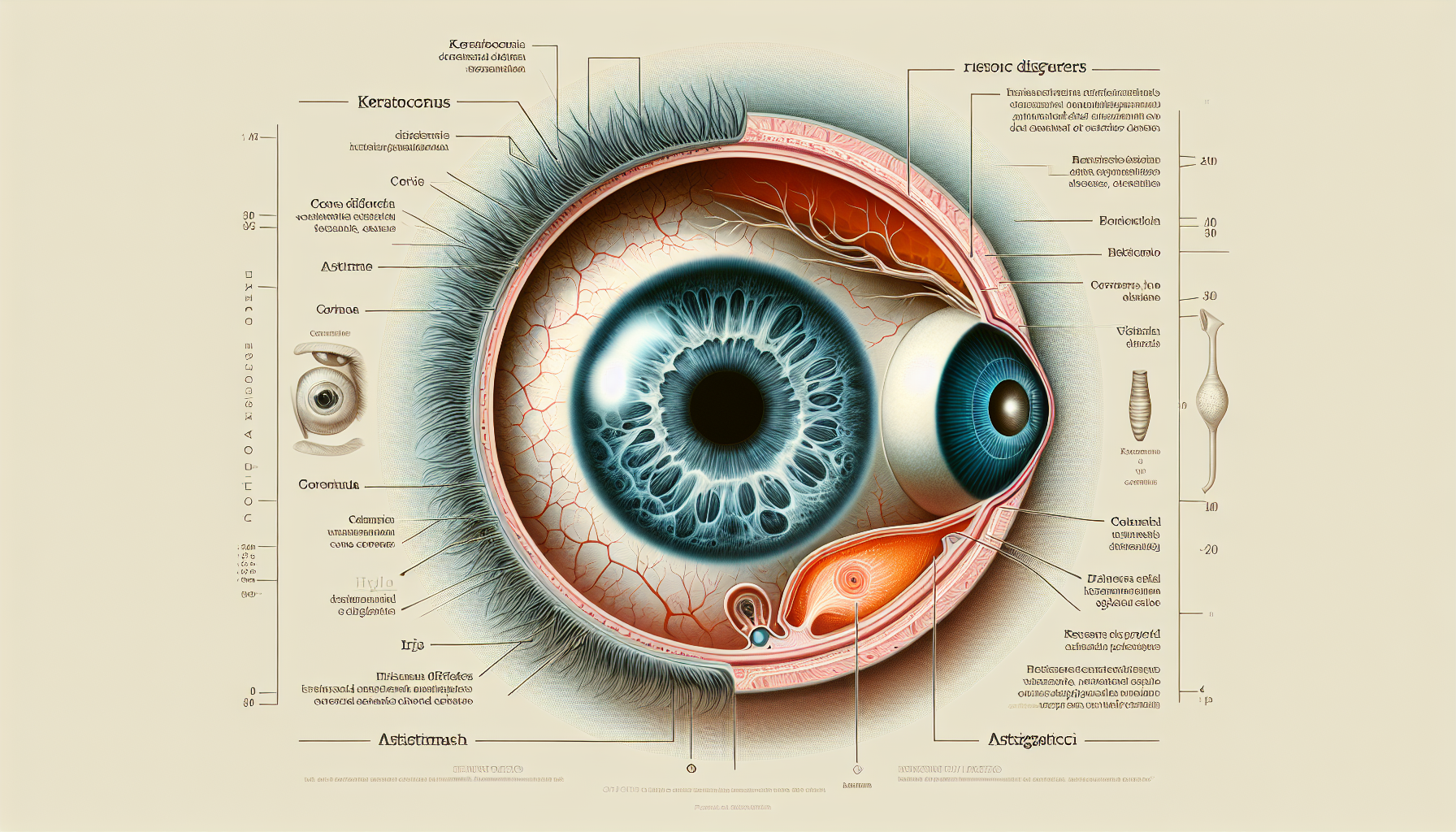Rewritten Article:
Navigating the realm of eye health can be challenging, especially when the terminologies sound similar but denote different conditions. Today, we’ll explore two such terms that often get mixed up – Keratoconus and Astigmatism. While they both relate to eye health disorders, their symptoms, causes, and treatment options are distinct.
Let’s delve into a comparative study between Keratoconus and Astigmatism, making it easier for you to understand the differences.
Keratoconus Explained:
Keratoconus denotes a state where your cornea, the clear front surface of your eye, becomes thin and progressively bulges outward into a cone shape. This abnormal shape can cause blurred vision and light sensitivity. It typically manifests during the teenage years and progresses until the early thirties. Factors influencing its development can include genetics, eye allergies, and associated connective tissue disorders.
Understanding Astigmatism:
Astigmatism is a common eye issue resulting from an irregularly shaped cornea or lens, which leads to blurred or distorted vision. This irregular shape is not perfectly round, but more like a rugby ball. There are varied types of Astigmatism, like hyperopic Astigmatism, where one eye is farsighted.
Unraveling the Symptoms:
Keratoconus can lead to blurred vision, difficulties in night vision, and light sensitivity. You might also experience glares and halos around lights, headaches, and eye discomfort. The unique factor is that even with eyeglasses or contact lenses, your vision may not improve significantly.
Astigmatism also presents symptoms like blurred vision, visual distortion, and eye strain. You might encounter difficulties seeing at night and experience a phenomenon known as “Astigmatism lights.”
Comparative Overview of Symptoms:
Keratoconus – Blurred vision, headaches, eye discomfort, glare and halos, difficulty seeing at night, and light sensitivity.
Astigmatism – Blurred vision, headaches, slight eye pain, nighttime glare, eye strain, and squinting for better vision.
What Causes These Conditions?
Keratoconus occurs due to a thinning cornea that distorts and morphs into a cone shape. The thinning results from collagen loss, which is a protein that maintains the eye’s structure.
Astigmatism, on the other hand, is caused by a defect in the eye’s cornea or lens. It can be congenital or develop later due to reasons like genetics, eye injuries, or certain eye conditions such as Keratoconus. While the causes differ, both conditions can impair vision.
How are They Diagnosed?
For diagnosing Keratoconus, along with routine eye check-ups, additional tests like Keratometry and corneal topography might be conducted. The doctors might assess your vision using an eye chart and a phoropter to analyze the refractive error.
To diagnose Astigmatism, the eye doctor might use an autorefractor or retinoscope to evaluate the level of Astigmatism. A Keratometer might be used to measure the curve of your cornea. A corneal topography scan can also be done to uncover any irregularities.
Treatment Options:
For Keratoconus, depending on the severity, the treatment can range from specialized contact lenses to a corneal transplant or corneal collagen cross-linking, which uses ultraviolet light and vitamin B drops to strengthen the corneal fibers.
Astigmatism, on the other hand, can be corrected using eyeglasses, contact lenses, or laser surgeries and other refractive surgeries that reshape the cornea for better light focus on the retina.
In summary, both Keratoconus and Astigmatism can cause blurred vision but are different conditions with distinct causes and treatments. Regular eye exams can detect these conditions early, enabling timely treatment, which might range from corrective eyewear to surgeries. As always, consult your eye doctor promptly if you suspect any abnormalities in your eye health.
For more information on eye conditions like Astigmatism and Myopia, you can explore our blog post titled, “Astigmatism vs. Myopia – What’s the Difference?”
If you live in Fresno and need quality eye treatment, Insight Vision Center is your go-to place. Our dedicated team offers modern therapies like corneal cross-linking and LASIK surgery, specifically for Keratoconus and Astigmatism. Trust us to provide thorough eye exams and guide you to an improved vision.
Book your appointment now!
Note: Aaron Barriga is the online marketing manager for Insight Vision Center. He has a deep understanding of medical procedures and a keen interest in eye and vision health. Aaron loves to share what he knows and learn through his blogs, focusing on topics related to eye care, particularly LASIK.

Comments are closed for this post.